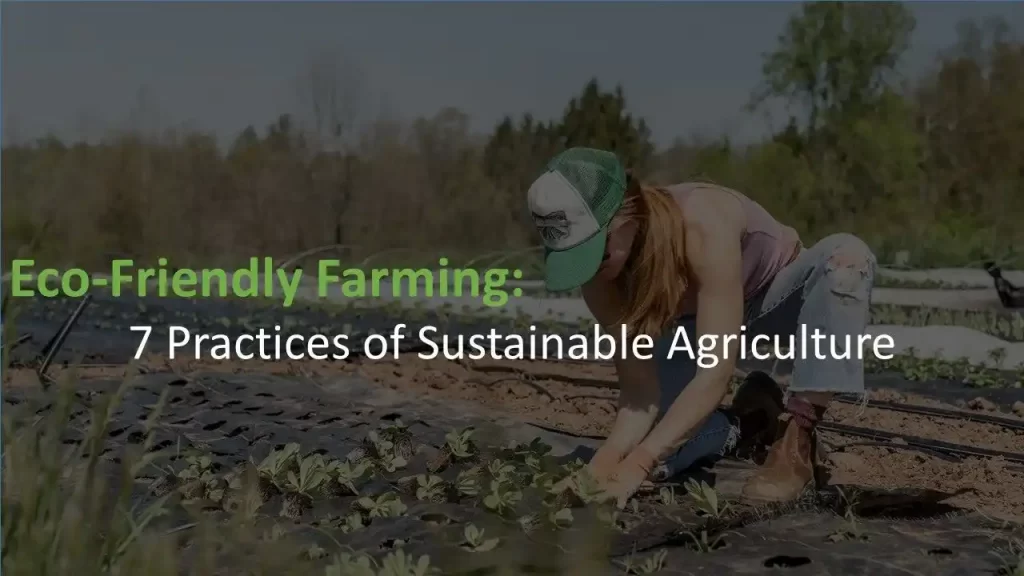Welcome to a world where nature and agriculture coexist in harmony, where the fields breathe with life and the soil flourishes with vitality. In the face of environmental challenges, sustainable farming practices have emerged as a beacon of hope. Today, we embark on a journey into the realm of eco-friendly farming, unveiling 7 practices of sustainable agriculture that not only nurture the Earth but also ensure the future of our food.
From ingenious techniques to mindful approaches, we’ll explore how these practices not only minimize ecological impact but also yield bountiful rewards for farmers and consumers alike.
Get ready to delve into the secrets of sustainable agriculture and discover how small changes in our farming methods can cultivate a greener, healthier, and more sustainable planet.
What is Sustainable Agriculture? Agriculture 101
What does it mean for agriculture to be sustainable?
In its essence, sustainable agriculture embodies the ability to produce food in a way that doesn’t deplete or exhaust our precious resources, ensuring their availability for future generations.
It’s a forward-thinking approach that harmonizes agricultural practices with the well-being of the planet.
Sustainable agriculture encompasses a wide range of principles and practices that prioritize environmental stewardship, social responsibility, and economic viability.
It emphasizes the delicate balance between meeting the needs of today and safeguarding the needs of tomorrow.
At its core, sustainable agriculture recognizes the interconnectedness of our ecosystems and strives to minimize harm to the environment. It embraces methods that protect soil health, conserve water, promote biodiversity, and reduce reliance on synthetic inputs.
By nurturing the land and working in harmony with nature, sustainable farmers pave the way for a more resilient and sustainable food system.
You May Also Read: Agroforestry 101: A Complete Guide to Integrated Farming Practices
Sustainable Agriculture vs Traditional Agriculture
When discussing sustainable agriculture, it’s helpful to contrast it with traditional agricultural practices. Here’s a table that highlights the key differences between the two:
| Aspect | Sustainable Agriculture | Traditional Agriculture |
| Resource Management | Conserves and preserves natural resources | May deplete or exhaust resources over time |
| Chemical Use | Minimizes or eliminates synthetic inputs | Relies heavily on pesticides and fertilizers |
| Soil Health | Focuses on soil conservation and regeneration | May contribute to soil degradation and erosion |
| Biodiversity | Promotes biodiversity and ecosystem resilience | May lead to monocultures and loss of biodiversity |
| Water Conservation | Emphasizes water efficiency and conservation | May result in excessive water use and pollution |
| Environmental Impact | Minimizes negative impacts on ecosystems | May contribute to pollution and habitat loss |
| Economic Viability | Strives for long-term profitability and resilience | Often focuses on short-term financial gains |
| Community Engagement | Supports local communities and social equity | May have limited community involvement or impact |
By comparing these two approaches, it becomes clear that sustainable agriculture offers a more holistic and forward-thinking approach to farming.
It seeks to address the pressing environmental and social challenges we face while ensuring a sustainable future for agriculture and food production.
Benefits of Sustainable Agriculture
Sustainable agriculture brings forth a multitude of benefits that extend far beyond the fields. Let’s explore the advantages it offers:
Environmental Conservation
Sustainable agriculture practices prioritize environmental stewardship by protecting soil health, preserving water resources, and promoting biodiversity.
By working in harmony with nature, farmers help maintain the delicate balance of ecosystems.
Better Resource Management
Sustainable farming techniques focus on efficient resource utilization. By minimizing waste and optimizing inputs such as water, energy, and fertilizers, sustainable agriculture ensures the long-term availability of these vital resources.
Prevent Soil Erosion
Sustainable farming methods, such as cover cropping and conservation tillage, help prevent soil erosion. By preserving the integrity of the soil, sustainable agriculture safeguards its productivity and reduces the risk of nutrient runoff into waterways.
Public Health Safety
Sustainable agriculture prioritizes the health and well-being of consumers.
By reducing or eliminating the use of harmful chemicals and pesticides, sustainable practices contribute to safer and healthier food options.
Reduce Pollution
Sustainable agriculture minimizes pollution by decreasing reliance on synthetic inputs and adopting natural pest control methods.
This helps reduce the environmental impact associated with conventional farming practices.
Cost-effectiveness
Sustainable farming practices, over time, can lead to reduced input costs and increased productivity.
By optimizing resource use and implementing efficient techniques, farmers can achieve cost savings while maintaining or even improving yields.
Social Equity
Sustainable agriculture fosters social equity by supporting local communities, promoting fair labor practices, and strengthening food security.
It encourages collaboration, knowledge sharing, and equitable distribution of resources within the agricultural sector.
These benefits illustrate how sustainable agriculture not only addresses pressing environmental concerns but also contributes to healthier ecosystems, resilient communities, and a more sustainable future for all.
You May Also Read: Eco-Farming Ultimate Guide: Nurturing Sustainable Agriculture for a Greener Future
Eco Friendly Farming: 7 Practices of Sustainable Agriculture
Now that you have an in-depth understanding about sustainable agriculture and its advantages.
Let’s jump into exploring 7 best practices of sustainable agriculture.
It is worth noting that there are several sustainable agricultural practices but in this blogpost, we have restricted to including the top 7 practices of sustainable agriculture.
You May Also Read: A Comprehensive Guide to Farm Bill 2023: The Latest Updates
1. Crop Rotation
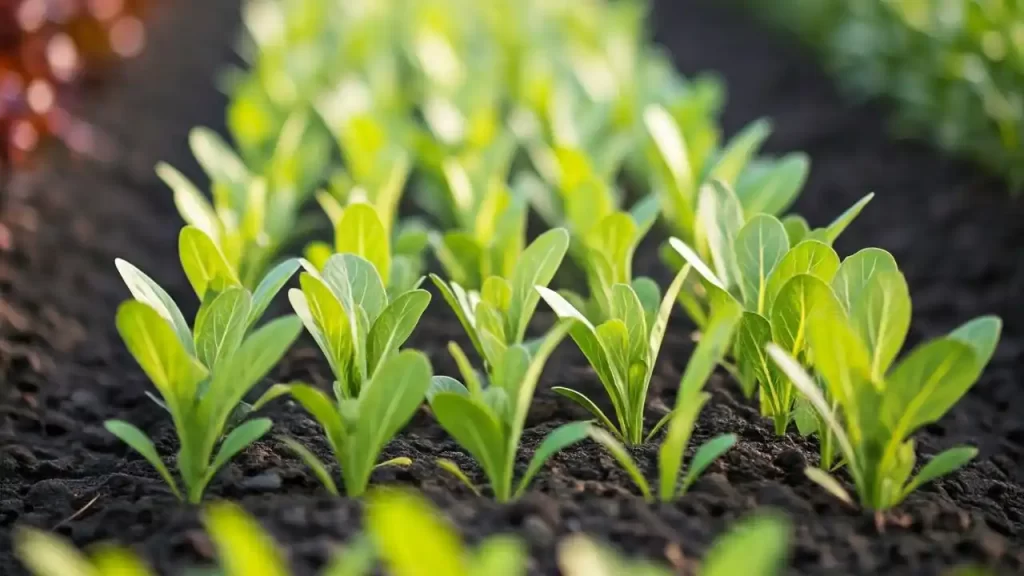
Crop rotation is a vital practice in sustainable agriculture. It involves changing the types of crops grown in a specific area from one season to another.
By rotating crops, farmers can enhance soil fertility, prevent pests and diseases, and improve overall crop yield.
An ongoing study at Iowa State University’s Marsden Farm research center has shown that complex crop rotation systems can outperform conventional single-crop practices in both yield and profitability.
The concept is simple yet effective: different crops have different nutrient requirements and can leave behind or deplete specific nutrients in the soil.
By alternating crops, these nutrients can be replenished naturally, reducing the need for synthetic fertilizers.
Additionally, crop rotation disrupts pest life cycles and minimizes the risk of disease buildup, reducing the reliance on chemical pesticides. It’s a practical and eco-friendly approach that promotes long-term soil health and sustainable farming practices.
2. Planting Cover Crops and Perennials
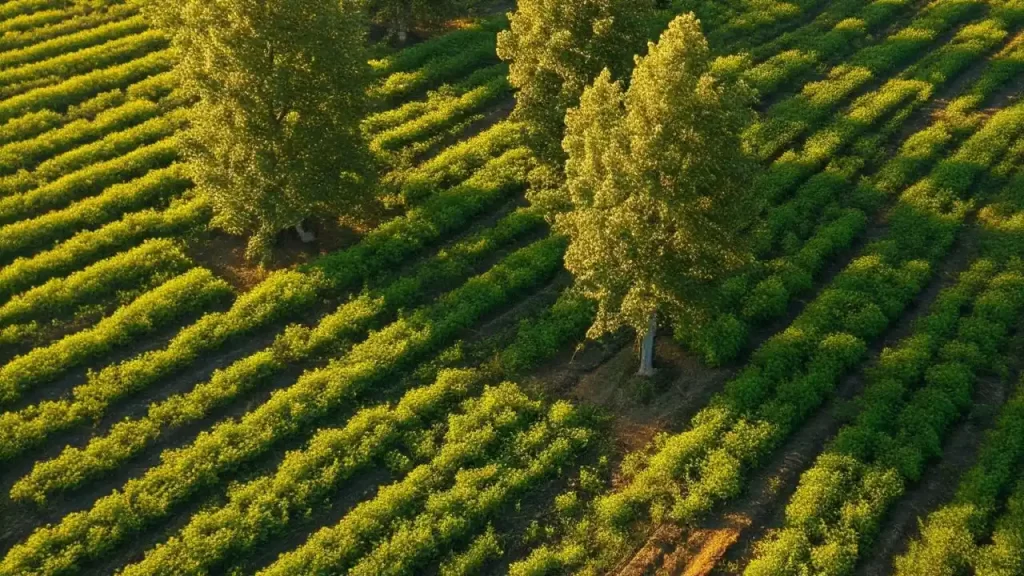
In the world of sustainable agriculture, the idea of “green carpeting” takes root through the practice of planting cover crops and perennials.
Planting cover crops has many benefits. For instance, picture a lush and vibrant landscape that not only protects and nourishes the soil but also invites beneficial organisms to thrive.
Cover crops, such as clover, rye, or legumes, are like nature’s cozy blanket for the earth.
They are sown between cash crops or during fallow periods, providing a protective layer that prevents soil erosion, retains moisture, and suppresses the growth of unwanted weeds.
These green guardians act as natural fertilizers, enriching the soil with organic matter when they are later tilled under or mulched.
Perennials, on the other hand, are the steadfast companions of sustainable farmers. These resilient plants, like fruit trees or perennial herbs, establish deep roots and stay in the ground year-round.
They anchor the soil, preventing erosion while providing a habitat for beneficial insects and pollinators.
With their ability to withstand changing seasons, perennials add stability and diversity to the agricultural landscape.
By embracing the practice of planting cover crops and perennials, farmers nurture a flourishing ecosystem where the soil is protected, fertility is enhanced, and biodiversity thrives.
3. Reducing Tillage
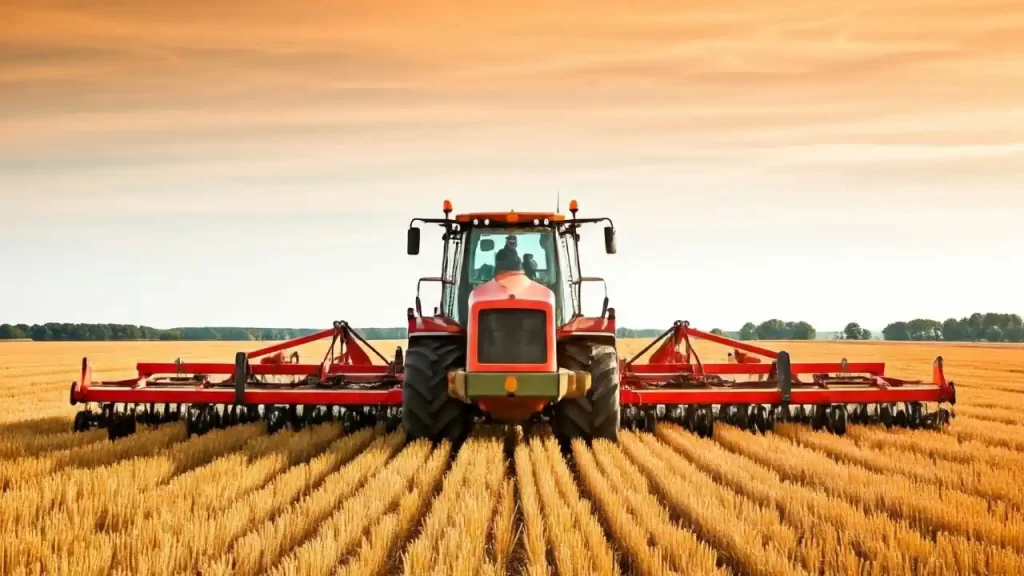
Instead of disrupting the earth with intensive plowing and cultivation, farmers adopt a more thoughtful and mindful technique.
By minimizing tillage, we preserve the delicate web of life beneath our feet. The soil becomes a haven for beneficial organisms, like earthworms and microorganisms, that work tirelessly to improve its structure and fertility. It’s like letting the land breathe freely, as we avoid unnecessary disturbance that can lead to erosion and loss of valuable topsoil.
Reducing tillage also conserves precious energy and resources. With fewer passes of heavy machinery, we reduce fuel consumption and greenhouse gas emissions. Plus, by maintaining a protective layer of organic matter on the soil surface, we lock in moisture, promote water infiltration, and suppress weed growth naturally.
Hence by treading lightly on the land, we foster a harmonious balance where the soil thrives, productivity soars, and our impact on the environment diminishes.
4. Applying Integrated Pest Management (IPM)
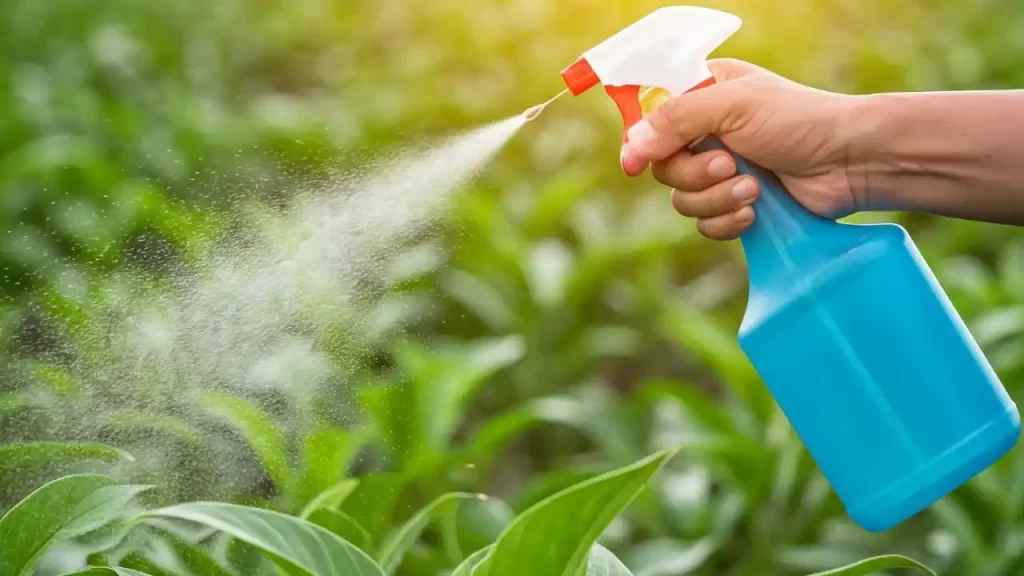
Integrated Pest Management (IPM) is a wise and balanced approach to pest control. It’s like nature’s gentle hand guiding us to minimize the use of harmful chemicals while protecting our crops.
IPM is a holistic and strategic method that integrates various pest control techniques. It starts with careful monitoring and identification of pests, understanding their life cycles, and recognizing the conditions that favor their growth.
By gathering this knowledge, farmers can make informed decisions on the most effective and least disruptive control measures.
Rather than resorting to indiscriminate pesticide applications, IPM encourages the use of environmentally friendly approaches. These may include biological control, where natural predators or parasites are introduced to keep pest populations in check.
Additionally, cultural practices such as crop rotation, proper irrigation, and maintaining healthy soil are emphasized to prevent pest outbreaks.
By embracing IPM, farmers strike a delicate balance between pest control and ecological harmony. They reduce reliance on synthetic pesticides, minimize the risk of harming beneficial organisms, and safeguard the health of our ecosystems.
5. Livestock Integration
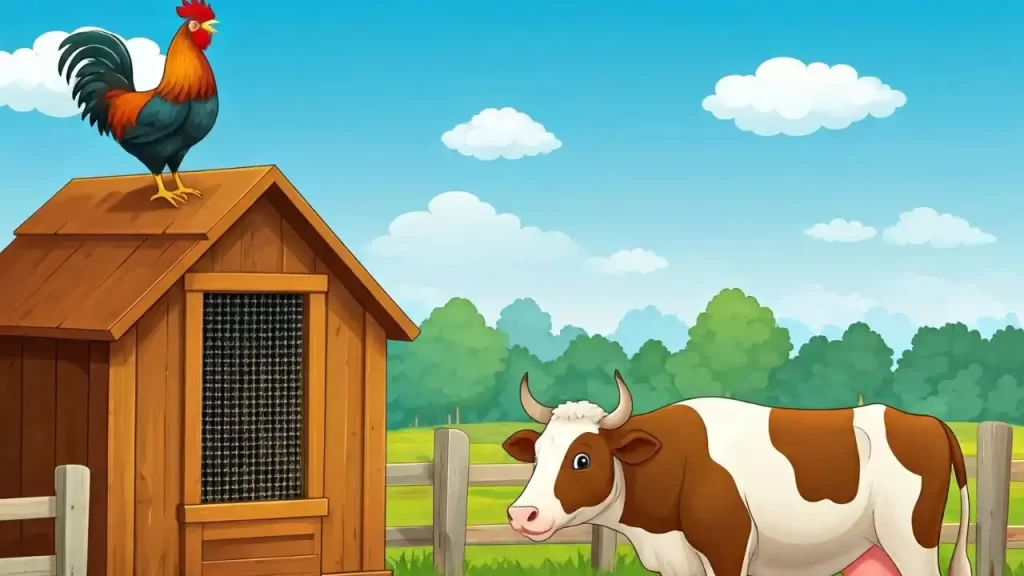
Through the practice of livestock integration, a harmonious relationship between crops and livestock can be achieved. It is a dynamic and symbiotic partnership that enhances the vitality of both the land and the animals that inhabit it.
Livestock integration involves carefully integrating livestock, such as cattle, sheep, or poultry, into the agricultural system.
The animals play a vital role in enhancing soil fertility and nutrient cycling. Their grazing activities help maintain healthy grasslands, promote natural biodiversity, and reduce the need for mechanical mowing or herbicides.
Furthermore, their manure becomes a valuable resource, serving as a natural fertilizer that enriches the soil. It’s a closed-loop system where the waste produced by the animals becomes a nutrient source for the crops, reducing the reliance on synthetic fertilizers.
Livestock integration also offers economic benefits. By diversifying farm enterprises, farmers can tap into additional revenue streams from livestock production, such as meat, milk, or eggs.
This integrated approach creates a sustainable and resilient agricultural system, where different components work in harmony, benefiting both the environment and the farmers’ livelihoods.
By embracing livestock integration, we foster a regenerative agricultural landscape where the symbiotic relationship between animals and crops ensures long-term sustainability.
You May Also Read: Top Picks: Best Farm Equipment to Purchase
6. Mulching
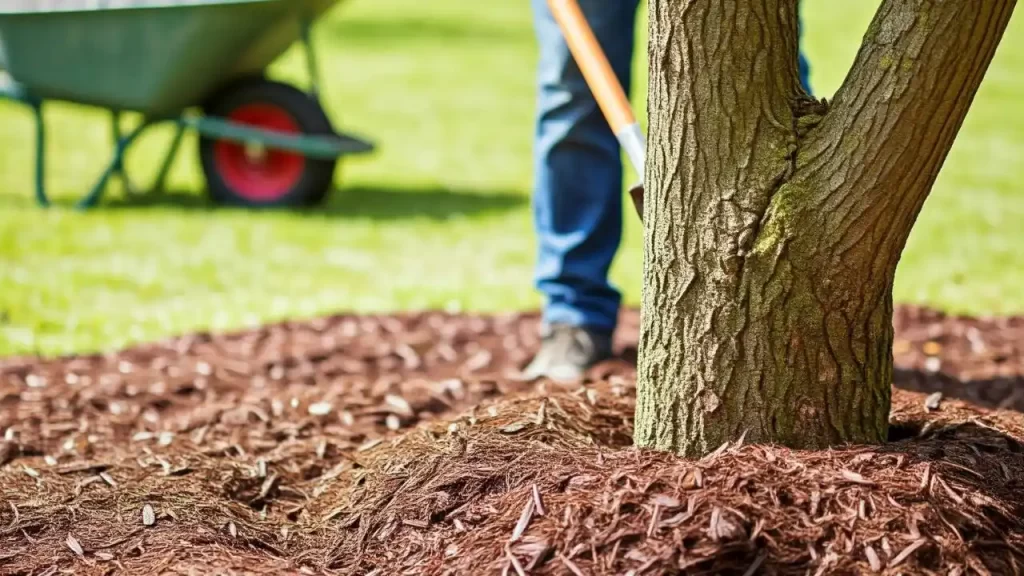
Mulching blankets the soil with a protective layer of organic matter. It’s like giving the land a cozy and nurturing embrace that yields a multitude of benefits.
Mulching involves covering the soil surface around plants with materials such as straw, wood chips, or compost.
This protective layer acts as a shield against the elements, retaining moisture and preventing evaporation. It helps to regulate soil temperature, keeping it cooler in hot weather and warmer during colder periods.
Beyond its protective qualities, mulch serves as a natural weed suppressant. By blocking sunlight, it inhibits weed germination and growth, reducing the need for manual weeding or chemical herbicides.
Mulch also acts as a barrier, preventing soil erosion caused by wind or heavy rainfall, thus preserving valuable topsoil.
As the organic mulch breaks down over time, it enriches the soil with essential nutrients, improving its fertility and structure.
It encourages beneficial microbial activity and earthworm populations, promoting a healthy and thriving soil ecosystem.
By adopting the practice of mulching, farmers cultivate a landscape that thrives with reduced water usage, minimized weed pressure, and improved soil health.
7. Adopting Agroforestry Practices
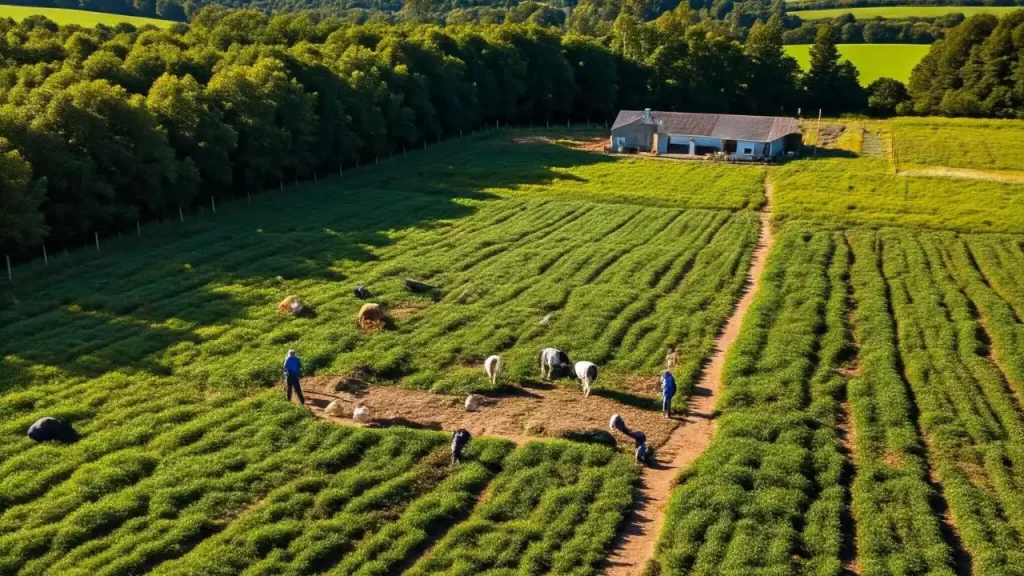
In sustainable agriculture, farmers combine trees and crops in a way that helps them both. This practice is called agroforestry. It’s like a smart and balanced approach that brings together the advantages of farming and forestry, creating a strong and lively environment.
Agroforestry involves integrating trees or shrubs with agricultural crops on the same land. It’s like nature’s ingenious design, where different components work in synergy, yielding a multitude of advantages.
The trees provide shade, shelter, and windbreaks, protecting crops from extreme weather conditions and reducing water evaporation from the soil.
The diverse canopy of trees fosters biodiversity, attracting beneficial insects, birds, and pollinators, thereby enhancing natural pest control and pollination.
The tree roots help prevent soil erosion, improve water infiltration, and stabilize the land. Furthermore, trees act as a carbon sink, mitigating climate change by sequestering carbon dioxide from the atmosphere.
Agroforestry systems offer multiple income streams for farmers. They can harvest timber, fruits, nuts, or other non-timber forest products from the trees, in addition to the agricultural crops they cultivate. This diversification of products and revenue sources creates economic resilience and sustainability.
By adopting agroforestry practices, farmers cultivate a landscape that thrives with enhanced biodiversity, improved soil health, and increased resilience to climate change.
You May Also Read: Eco-Farming Ultimate Guide: Nurturing Sustainable Agriculture for a Greener Future
Unknown Facts about Sustainable Agriculture
While sustainable agriculture is gaining recognition and importance, there are still some lesser-known facts that highlight the remarkable impact and potential of this approach.
- A staggering 45% of the world’s population is engaged in agriculture, making it the largest employer worldwide (ScienceDirect)
- Organic food products witnessed a 7.7% growth rate in 2010, compared to 2009, and accounted for almost 4% of all food products sold in the U.S (University of Michigan)
- Organic farming requires 2.5 times more labor than traditional farming, but it yields 10 times the profit (The Center for Sustainability at Aquinas)
- According to the 2007 Census of Agriculture performed by the USDA, the average age of farmers across the country is around 57, and the fastest-growing group of farmers is 65 and older
- Small-scale farmers are the most essential element in food security
Conclusion
Incorporating these practices of sustainable agriculture into our farming methods can pave the way for a brighter and more resilient future.
Let us embrace crop rotation, planting cover crops, reducing tillage, adopting integrated pest management, integrating livestock, mulching, and agroforestry.
Together, we can nurture the land, protect biodiversity, conserve resources, mitigate climate change, and cultivate a sustainable and abundant food system.
It’s time to take action and cultivate a future where sustainability thrives in every field, benefiting both the environment and future generations.

